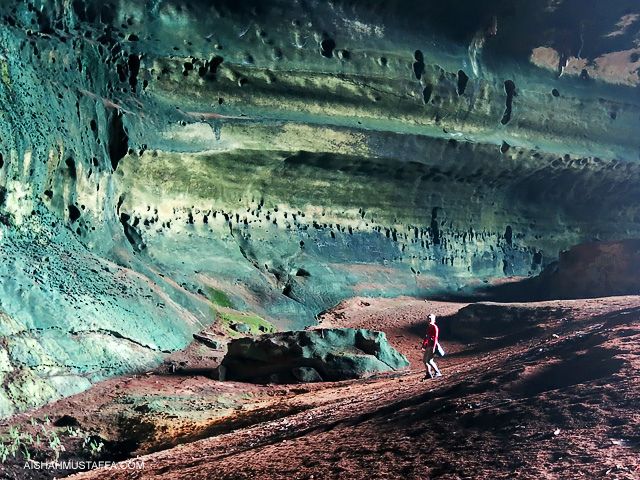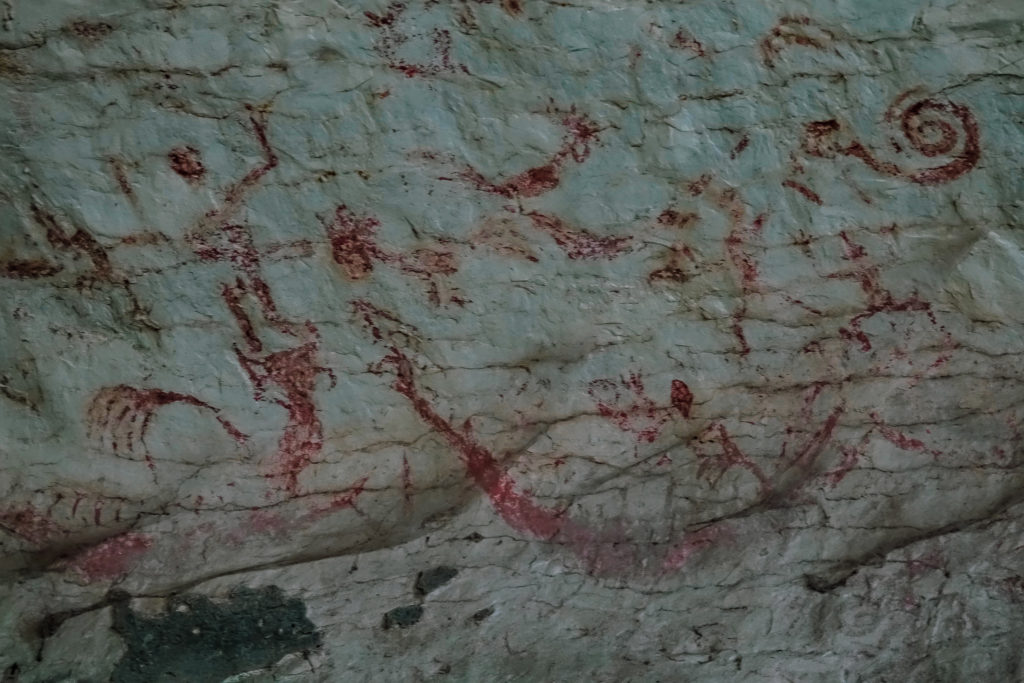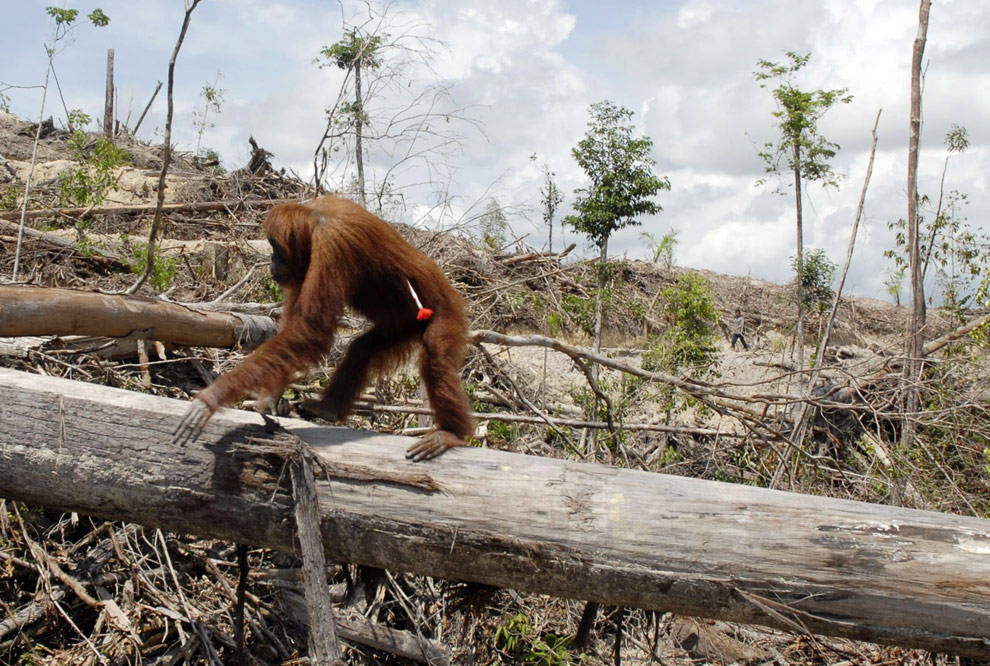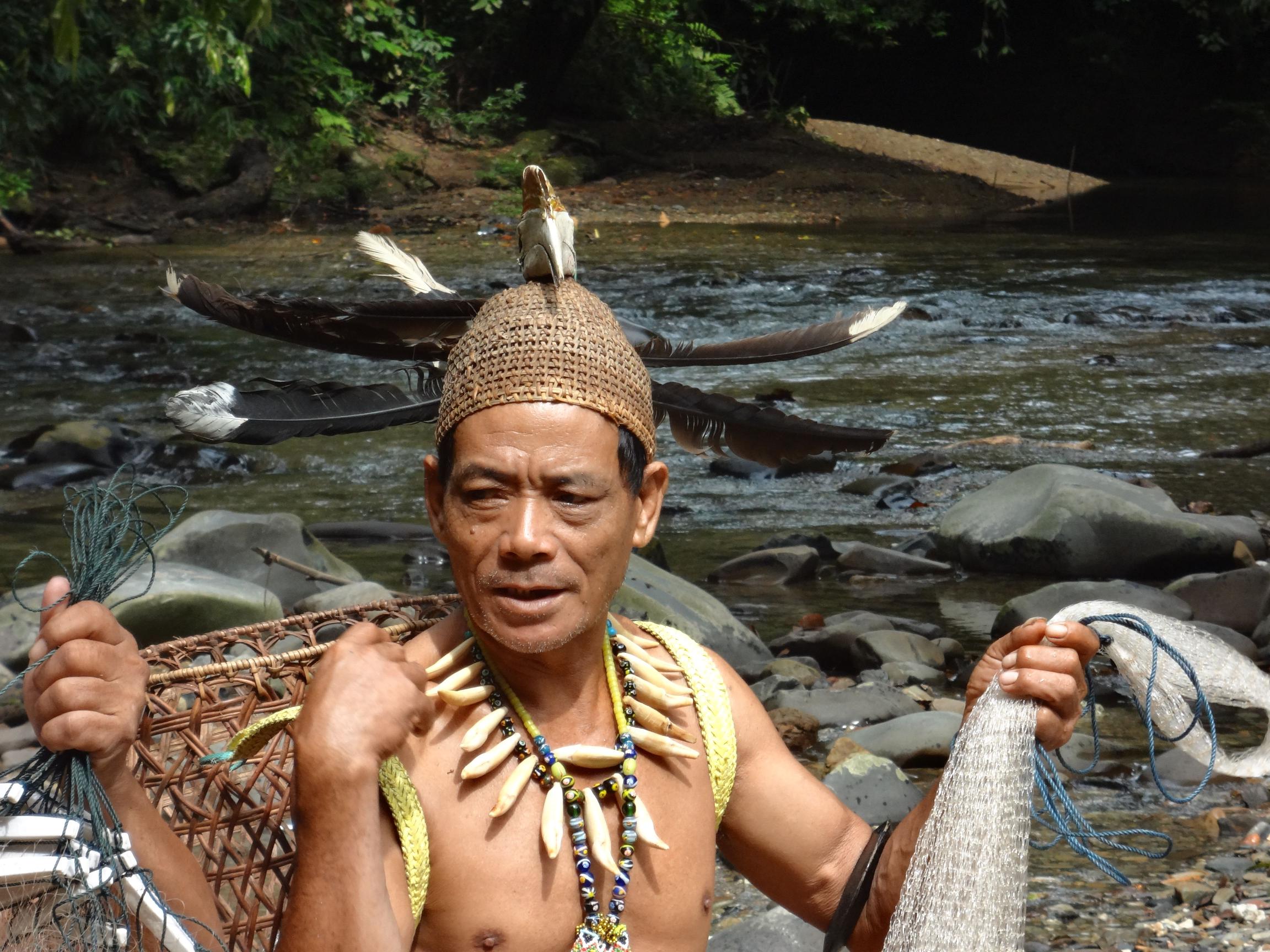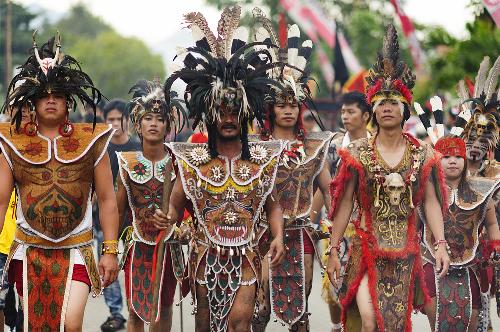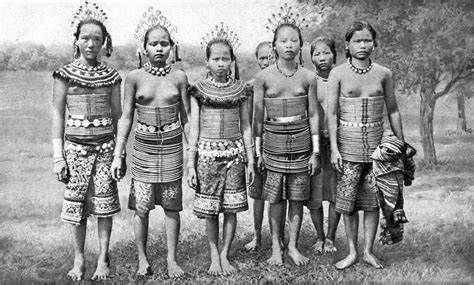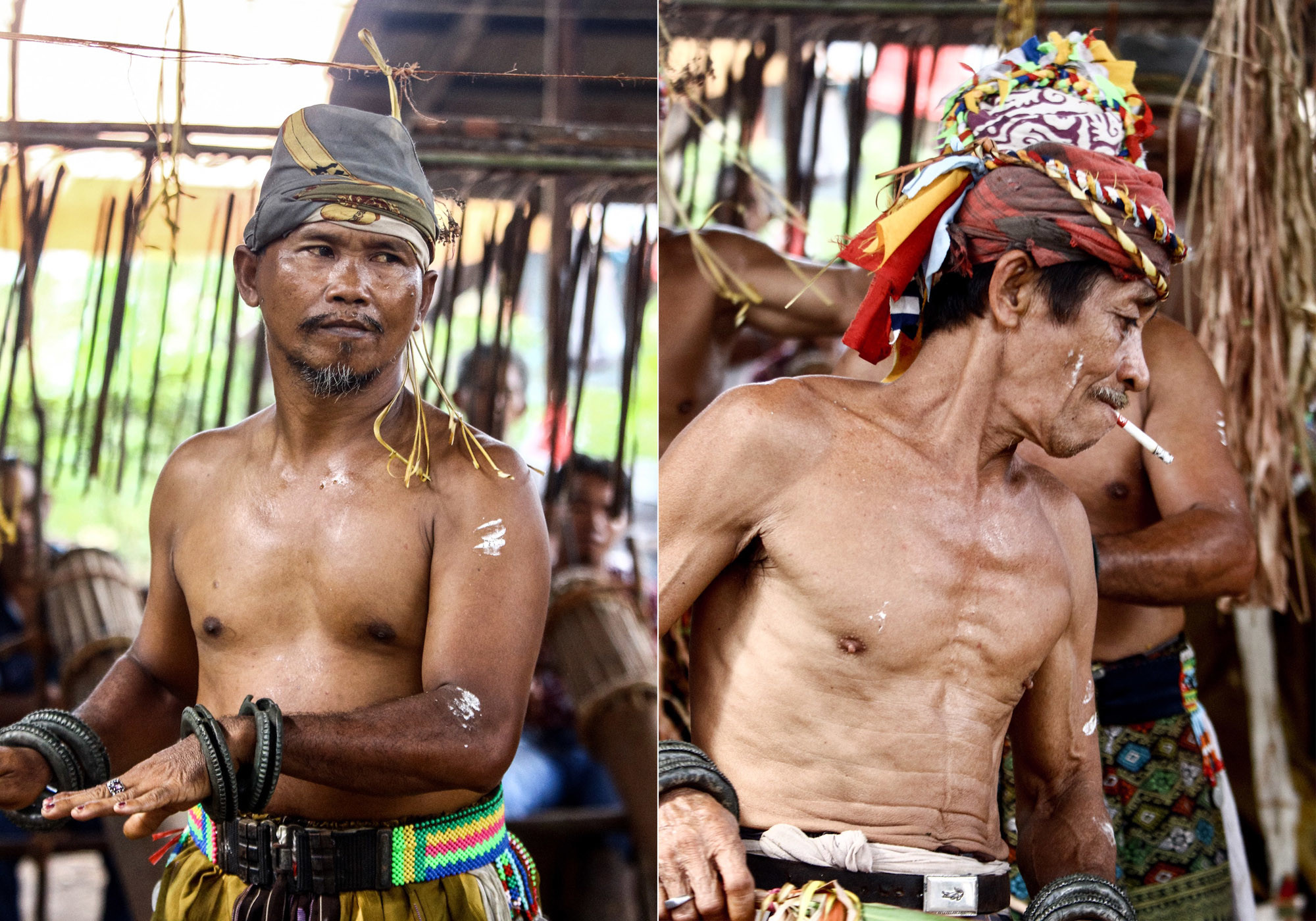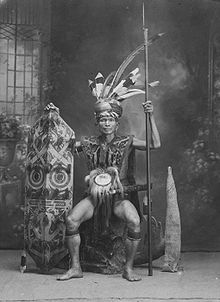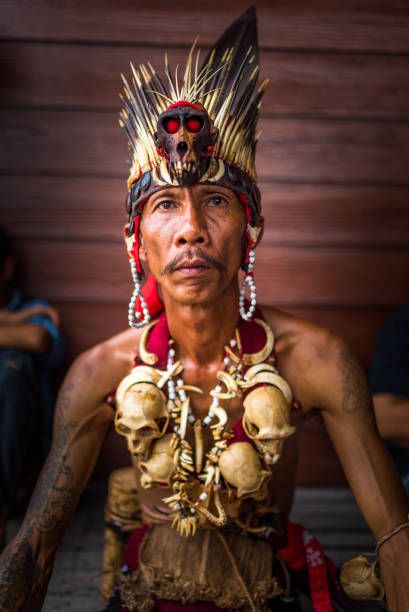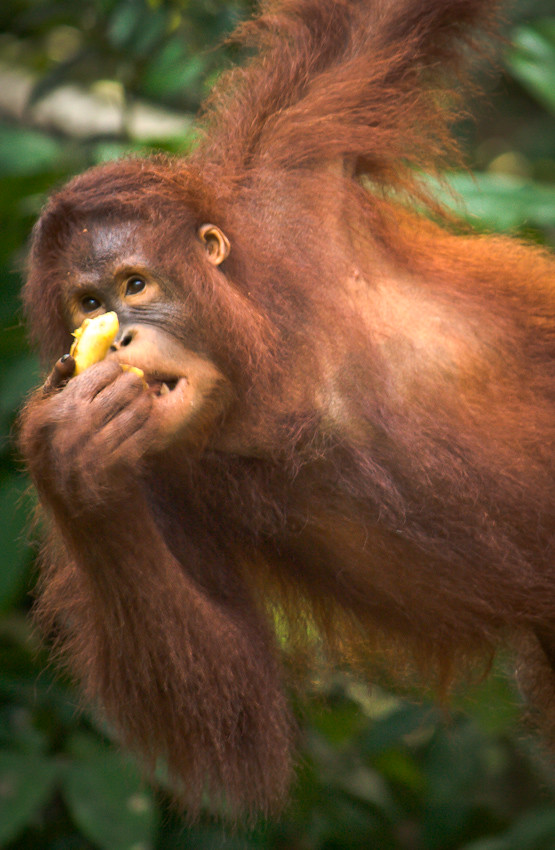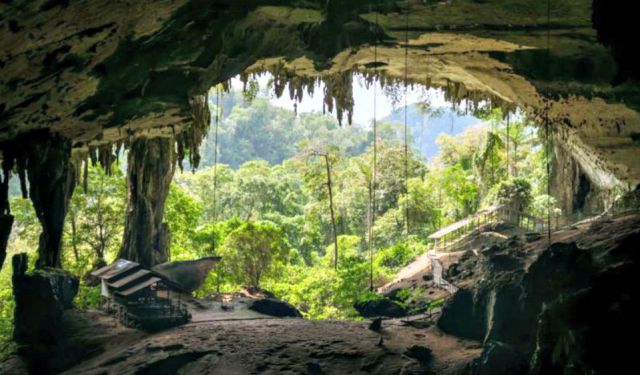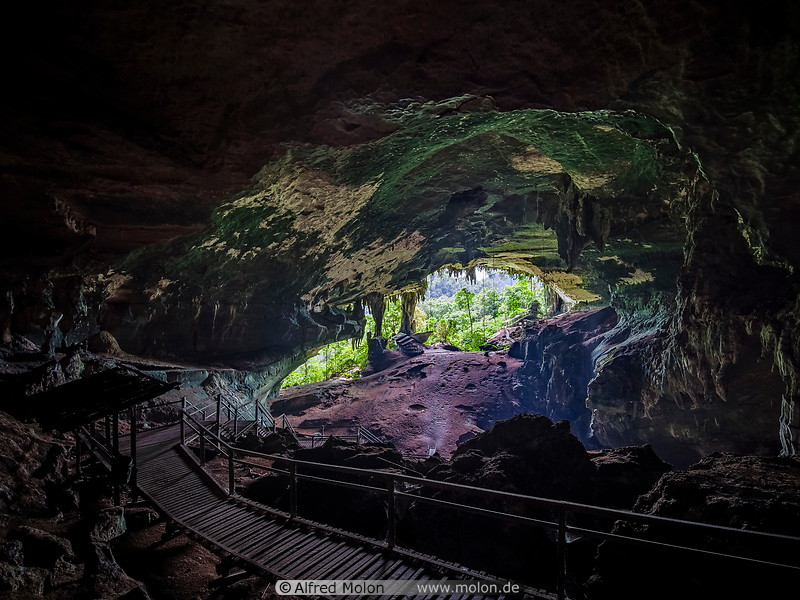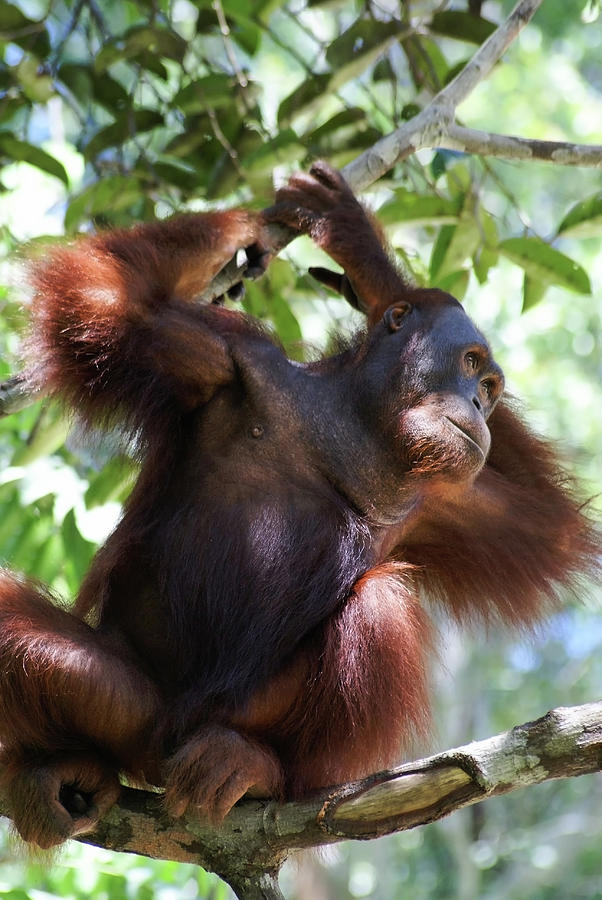
AsianOverland.net
Tour Guide - Itinerary
Asian Overland Sydney to London
Started 22/06/2022 Finished 21/06/2023365 Days ITINERARY
Day 48 date 08/08/2022MIRI to NIAH CAVE, SARAWAK, MALAYSIA
ASIANOVERLAND.NET SYDNEY TO LONDON DAY 48: MIRI TO NIAH CAVE, SARAWAK, MALAYSIA
Niah Cave is only 110 km southwest of Miri, much of the area along the way having been cleared of rainforests, with devastating effects to the rainforest habitat, destroying much of the homelands of the orangutan.
The area around Niah Cave itself still contains beautiful, untouched rainforests and some of the best rainforest walks in the world, on the walk towards Niah Cave, and at the end of the massive Niah Cave, untouched rainforest leads you to ancient caves first inhabitated and painted 50,000 years ago. There are millions of bats and swiflets in Niah Cave, and it is extremely dark in the middle of the kilometer long cave, so bring a phone or torch.
The first people lived at Niah Cave 50,000 years ago, when Borneo was connected to the mainland of Southeast Asia. The landscape of Niah Cave was drier and more open than it is now. Prehistoric Niah Cave was surrounded by rainforests with bush, parkland, swamps, rivers and orangutan. The first people survived in the rainforests by hunting, fishing, mollusc collection and plant gathering.
Archeological evidence of human population in the Niah Cave area dates back to 40,000 BC including the discovery of a Homo sapiens skull nicknamed "Deep Skull", which is the oldest modern human skull in Southeast Asia. The skull probably belongs to a female in her late teens to mid-twenties. Unfossilised Asian giant pangolin bones dated back to 30,000 BC were also found near the "Deep Skull", as well as ice age burial sites 20,000 years old inside the Niah Cave.
At the end of Niah Cave is another beautiful rainforest to walk through, where you see the oldest known figurative art painting, over 40,000 to 52,000 years old.
In the 1950s, Tom Harrisson, the curator of Sarawak State Museum was searching for evidence of ancient human activity in Sarawak. He came across Niah Cave and observed that since the cave was cool and dry and there were millions of bats and swiflets which could be eaten, ancient humans probably lived in the cave. They found evidence of long term human occupation, habitation, and burial.
In 1957, the Sarawak museum organised a larger expedition and found eathernware, shell scrapers, shell ornaments, stone pounders, bone tools, and food remains. Radiocarbon dating of the charcoal layers put the site at 40,000 years old. The expedition team discovered the "Deep Skull" in the "Hell Trench" (for its heat and humidity) in February 1958. The skull is highly fragile and is not fossilised. Near the skull, a complete left femur and right tibia were found, which belongs to the same person.
In 1960, Don Brothwell concluded that the Deep Skull belonged to an adolescent who may be closely related to indigenous Australians from Tasmania.
In 2006, studies from the Niah Cave Project found that the ancient humans living in the Niah Caves probably already used mammal and fish trapping technologies, projectile technology, tuber digging, plant detoxification, and forest burning.
The Dayak are indigenous people of Borneo. Dayak is a loose term for over 200 riverine and hill-dwelling ethnic groups, located mainly in the central and southern interior of Borneo, each with their own dialect, customs, laws, territory, and culture. Dayak languages are categorised as part of the Austronesian languages.
© This work is copyright. Apart from any use permitted under the Copyright Act 1968, no part may be reproduced by any process, nor may any other exclusive right be exercised, without the permission of Peter Searle, peter@portseavillageresort.com; 1980-2024.
Website built by Justin O’Dea www.webdeveloperdocklands.com.au

